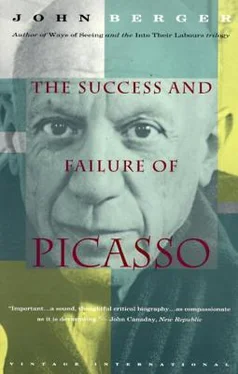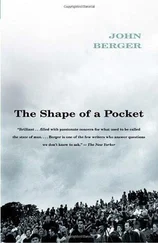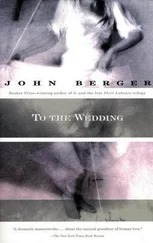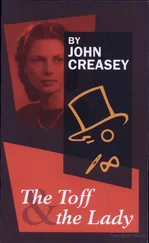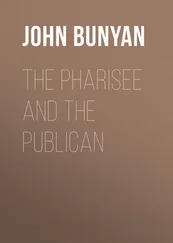Words I have that can pierce the heart,
But what can he do but touch?’
Daybreak and a candle-end
But Picasso’s confession is even more comprehensive and more tragic. For, apart from the directly sexual theme, there is another, parallel to it, but with different implications. Throughout the whole series of drawings Picasso turns from one to the other, as though they were different aspects of the same reality. The second theme is that of the artist and his model.
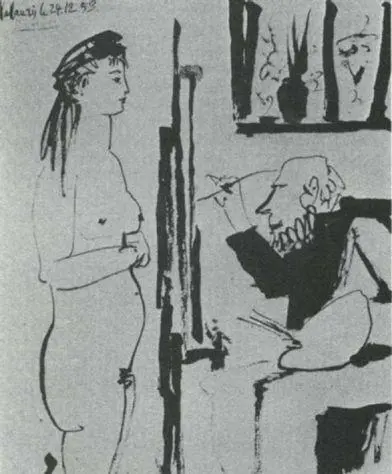
117 Picasso. Painter and Model. 24 December 1953
The model is the same young woman — in so far as she too is sex, nature, life. And the painter, though sometimes he is depicted as old and sometimes young, sometimes thin and sometimes fat, is the same man in so far as he is absurd and helpless. The complaint is different. It is no longer that an old man’s desires are obscene and absurd despite himself: it is that to paint in front of such a young woman, to put marks on canvas and to peer at her proportions, instead of making love to her, is also absurd, and absurd in such a dry, pedantic way that it too becomes obscene.
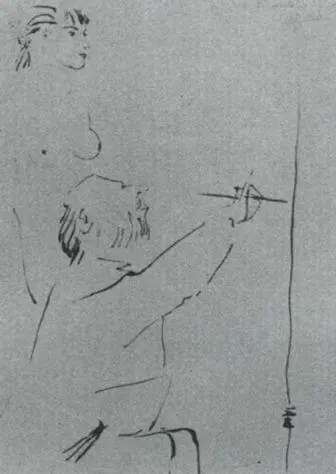
118 Picasso. Painter and Model. 25 December 1953
Thus the role of the young woman remains very similar. Her youth, her beauty, her natural appetites, her tenderness and all that makes her desirable are there to mock all men who cannot or will not take her on her own terms: and those terms are both as perfect and as ruthless as nature. For her, old age is a debility and a hindrance, an act of imagination is a transitory game, art is an incomprehensible — at best harmless — way of passing the time. Her true companion is the monkey. Finally she chooses him instead of the man, or at least in proxy for the man who is eternally incapacitated.
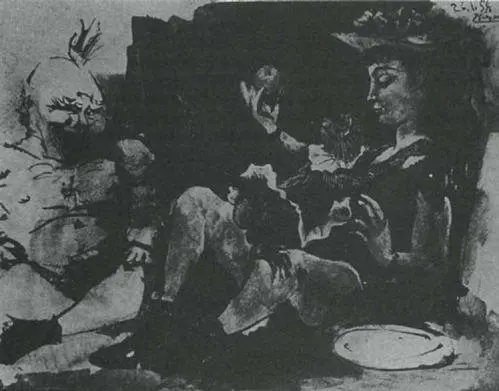
119 Picasso. Woman, Apple, Monkey, Man. 26 January 1954
Perhaps the bitterest drawing of the whole series is that in which the monkey pretends to paint, and where, for the first time, the young woman, instead of looking indifferent whilst being painted, responds to him and smiles. The degree to which that response mocks us is shown by Picasso in the pun that he has drawn between her breast and his muzzle. Many have called this witty. It is witty, but it is a wit born out of much suffering.
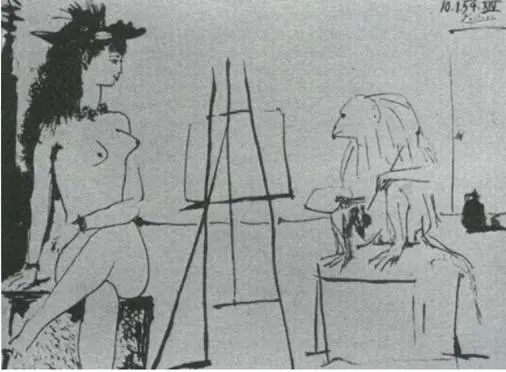
120 Picasso. Woman and Monkey Painting. 10 January 1954
In his old man’s confession, Picasso confesses to despair. It is not the social despair of Goya; it is a despair confined and belonging to his own life. The drawings are like a retrospective exhibition of that life. The despair is to some extent qualified by the fact that he can express it. But it remains.
It is the despair of the idealized ‘noble savage’ who, alone, abstracted from history and insulated from any social reality, is forced back and back until finally he is left with all his imagination unaccounted for by the pure nature which he must worship. The monkey who was once his companion in freedom, a dumb critic of society by the side of a more articulate one, becomes in the end his rival and humiliator. His gifts become his absurdity. Nor is it that he simply considers his own work a failure. It is the very idea of art which is attacked — attacked by Nature, with which now as an old man, without a unique people and so without any true followers, he has been left utterly alone. He himself now believes in this attack and actually sides with Nature against art because civilization, as he has found it, has given him only one thing: acclaim.
The gifts of an imaginative artist are often the outriders of the gifts of his period. Frequently the new abilities and attitudes become recognizable in art and are given a name before their existence in life has been appreciated. This is why a love of art which accompanies a fear or rejection of life is so inadequate. It is also why ideally there should always be a road open to art even for those to whom the medium, the talent, the activity involved mean nothing. Art is the nearest to an oracle that our position as modern scientific men can allow us.
What happens to an artist’s gifts may well reveal, in a coded or cyphered way, what is happening to his contemporaries. The fate of Van Gogh was the partial fate of millions. Rembrandt’s constant sense of isolation represented a new intimation of loneliness experienced, at least momentarily, by hundreds in seventeenth-century Holland.
And so it is with Picasso. The waste of his genius, or the frustration of his gifts, should be a fact of great significance for us. Our debt to him and to his failures, if we understand them properly, should be enormous.
Picasso has remained a living example, and this involves far more than not dying. He has not stopped working. He has not lied. He has not allowed his personal desperation to destroy his vitality or his delight in energy. He has not become politically — and therefore humanly — cynical. He has never, in any field, become a renegade. We cannot write him off. He has achieved enough to show us what he might have achieved. Because he is undefeated, he remains a living reproach. But a reproach against what?
Picasso is the typical artist of the middle of the twentieth century because his is the success story par excellence . Other artists have courted success, adapted themselves to society, betrayed their beginnings. Picasso has done none of these things. He has invited success as little as Van Gogh invited failure. (Neither was averse to his fate, but this was the limit of their ‘invitations’.) Success has been Picasso’s destiny, and that is what makes him the typical artist of our time, as Van Gogh was of his.
There have been — and are — many fine contemporary artists who have not achieved success, or, as we say, the success they deserve. But nevertheless they are the exceptions — sometimes because, courageously and intelligently, they have wanted to be so.
Consider how in the last twenty years the rebels and iconoclasts of the years before have been honoured! Not to mention traditionalists like Bonnard and Matisse. Or consider the phenomenon from the consumers’ rather than the producers’ point of view. Art, and especially ‘experimental’ art, has now become a prestige symbol, taking the place, in the mythology of advertising, of limousine cars and ancestral homes. Art is now the proof of success.
It would be too far outside the scope of this essay to explain why this has happened or to discuss the accompanying bitter contrast between the fortunate and unfortunate among artists. In a competitive society rewards such as are now offered for art are bound to mean an immense and uneconomic number of underprivileged hoping against hope for their chance.
The fact remains that since the French Revolution art has never enjoyed among the bourgeoisie the privileged position it does today. Once the bourgeoisie had their own artists and treated them as professionals: like tutors or solicitors. During the second half of the nineteenth century there was also an art of revolt and its artists were neglected or condemned until they were dead and their works could be separated from their creators’ intentions and treated as impersonal commodities. But today the living artist, however iconoclastic, has the chance of being treated like a king; only, since he is a king who is treated rather than who treats, he is a king who has lost his throne.
Читать дальше
